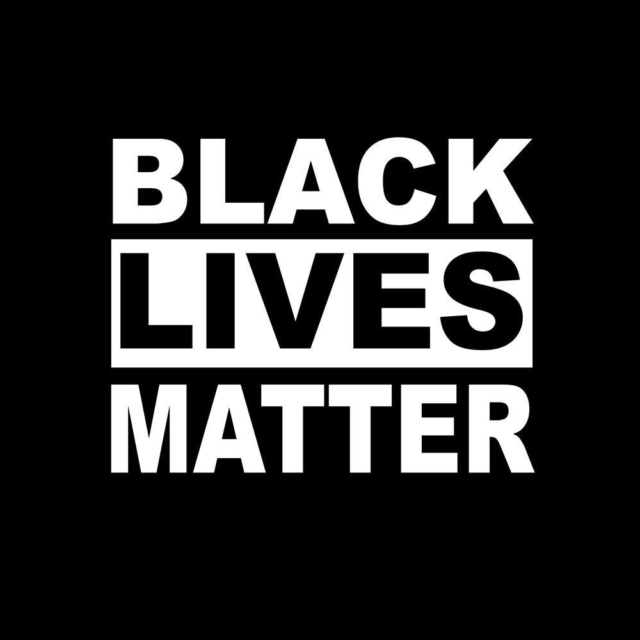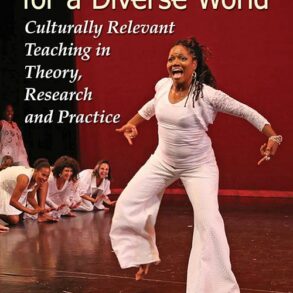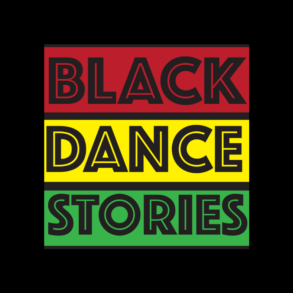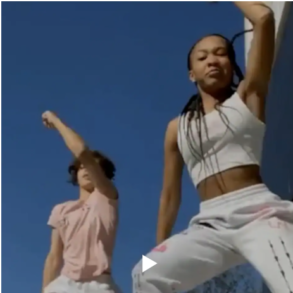Black People Have the Right to Be Free – a community message from Luna Dance

Dear Luna Community,
August 2, 2020, four black girls ages 6-17 years are forced to lie face-down on a sidewalk at gunpoint. I first read about this in USA Today, where the story was buried in the middle of the newspaper. Why is this not front-page news? Do we care so little about black and brown children? Six months later, on January 29, 2021, a 9-year old black girl is pepper-sprayed and handcuffed. As the leader of an arts organization dedicated to children’s freedom through the art of dance, it is a gut-punch to see black girls stripped of their liberation. What is especially heart-breaking is that I know there are many more stories like this that do not make the news cycle.
As artists and educators, can we truly change this narrative for black children? At a recent board retreat, Luna board member and dance educator, Nia Womack-Freeman asked:
A dance organization like Luna that values and states that it wants children to be free, beckons me to ask how do we support children’s freedom when outside factors like institutionalized racism in schools, community policing, inequitable access to healthy living, poor healthcare, etc. are directly restricting that child’s freedom?
The structures and systems of racism that public schools are built on are forcing me to question if Luna is truly making an impact. Luna’s teaching artists taught at one school that required their students to pass through the hallways with hands clasped behind their backs (like the perp walk) so they would not touch each other. Children moved freely and fully embodied for one hour, then left the dance class with their bodies enclosed. As I reflect on this, it is important to note that the architects of many California schools also designed industrial prison facilities.
As Luna fulfills our Theory of Change while contemplating Nia’s question, we recognize our responsibility. We know that . . .
- We must be vigilant and reflect on our discomfort as we acknowledge our biases and assumptions
- We must continue to learn and unlearn
- We must work with others committed to structural and systemic change
- We must cede space to BIPOC dance education leaders to create the change they want to see
We invite you to act with us to build a just society where black girls can experience freedom inside and outside of the dance classroom. As we investigate these resources shared by Luna’s board of directors and faculty, we humbly share them with you below.
Moving Together for Change,
Nancy Ng, Executive Director of Creativity & Policy
Anti-Racism Resources for Parents & Educators
- Your Kids Aren’t Too Young to Talk About Race: Resource Roundup (resource page)
- We Want to Do More Than Survive: Abolitionist Teaching and the Pursuit of Educational Freedom by Dr. Bettina L. Love (book)
- bell hooks Teaching Trilogy: Teaching to Transgress, Teaching Critical Thinking, Teaching Community by bell hooks (books)
- What if All the Kids Are White: Anti-Bias Multicultural Education with Young Children and Families by Louise Derman Sparks and Patricia G. Ramsey (book)
- Killing Rage by bell hooks (book)
- Raising Free People: Fare of the Free Child with Akilah S. Richards (podcast)
- Teaching Tolerance: Race & Ethnicity (website)
- Embrace Race (website)
- Understand, Learn and Act: Teaching in the Midst of Mass Protests for Black Lives (website)
- Racism Explained to My Daughter by Tahar Ben Jelloun
- Culturally Responsive Teaching and the Brain by Zaretta Hammond
Anti-Racism Resources for Children
- Not My Idea: A Book About Whiteness by Anastasia Higginbotham (children’s book)
- Woke Kindergarten by akiea “ki” gross (online resource for adults and kids)
- 31 Children’s Books to Support Conversations on Race, Racism, and Resistance
Other Resources
- 13th (documentary)
- Scaffolding anti-racism resources (resource doc)
- White Fragility by Robin DiAngelo (book)
- Me and White Supremacy by Layla F. Saad (book)
- The History of the Police (PDF)
- A Guide to Allyship (resource doc)
- Politically Reactive with W. Kamau Bell and Hari Kondabolu #53: What did we learn? With Alicia Garza and Wyatt Cenac (podcast episode)
- Reading List: Is This Moment Radicalizing You? (twitter thread)
- The Characteristics of White Supremacy Culture by Kenneth Jones and Tema Okun (book excerpt)
- Everyday White People Confront Racial and Social Injustice: 15 stories edited by Eddie Moore, Jr., Marguerite W. Penick-Parks and Ali Michael
Black-focused Resources
- Family-Care, Community-Care and Self-Care Tool Kit: Healing in the Face of Cultural Trauma by the Community Healing Network and The Association of Black Psychologists, Inc.
- Community Healing Network (building the movement for emotional emancipation across the African Diaspora)
- The Wellness of We (daily recorded practices in joy, wellness, and love led by black people)
- 44 Mental Health Resources for Black People Trying to Survive in This Country
- Ourselves Black (includes articles on black parenting)
Anti-Racism Resources for Dancers
National Guild’s Anti-Racism as Organizational Compass
The Dance Union Town Hall for Collective Action
Dancing Around Race
Stories of Anti-racist Dance Activism
Dancers use their art form to stand up, share their voices, protest and galvanize.






































